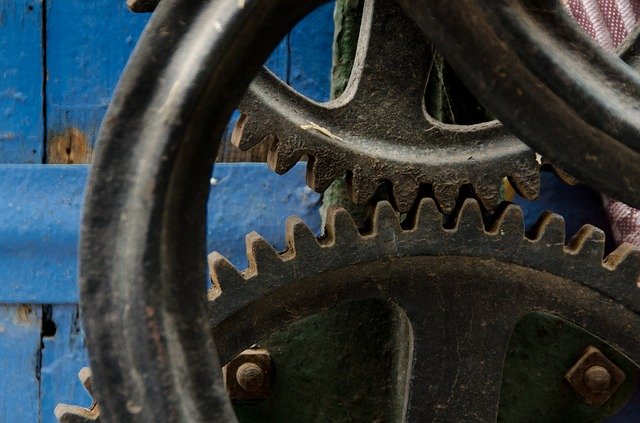 In the second in a series of three articles, John Glover moves on from the most common machinery safety myths to explain why it’s so important to anticipate problems and allocate sufficient resources.
In the second in a series of three articles, John Glover moves on from the most common machinery safety myths to explain why it’s so important to anticipate problems and allocate sufficient resources.
If senior management doesn’t have an insight into what could go wrong without a good level of machinery or process safety competence being in place, then they will need to invest more resources in to this area.
Bear in mind that some problems may be catastrophic and could occur with no prior warning; this could affect the business’s long-term survival and would mean that it is (in effect) always in constant crisis. It could also lead to increased insurance premiums or even the potential for an insurer to refuse to insure the business.
Also, consider the need to raise capital from shareholders or through the markets when the business wants to invest in a new factory with machinery and production lines. If they have a poor accident record, then they may struggle to raise the capital.
At one end of the scale it could mean a simple failure to meet statutory and duty holder obligations in respect of risk during a project. It may, alternatively, mean a risk of damage or loss to plant and equipment and other assets resulting in a huge financial loss. Ultimately, it could mean risks to the safety of individuals. Fortunately, we are in a position to do something about it if we really get cracking to implement a solution.
Risk management
Machinery risk management is no silver bullet or guarantee of success but it can certainly improve decision-making, help to avoid unpleasant surprises and improve a company’s financial prospects by helping to increase its bottom line (i.e. net profits).
The principle behind it is to think laterally and consider the breadth and diversity of the risks facing the organisation. Remember that if someone is injured, then this could result in a claim for damages and a criminal prosecution and this could be extremely costly to defend in court.
Value and prioritise assets
The most valuable asset that any organisation has is its workforce but don’t forget those tangible machine assets for producing. After all, it is the people that produce the goods and services that allow the organisation to profit.
Competency and training in machinery safety should be firmly at the top of the business’ hierarchy. Leaving aside statutory duties, it makes good business sense to protect assets such as plant and machinery.
Data from recent years indicates that 25-30 per cent of manufacturing industry fatalities in Great Britain was related to maintenance activities.
Maintenance considerations
Maintenance includes inspection, testing, measurement, replacement, adjustment, repair, upkeep, fault detection (troubleshooting), servicing, lubrication and cleaning. Remember: maintenance activities fall in to two categories: proactive (preventative) and reactive (corrective).
Most accidents occur during corrective maintenance. The need for this can be due to a lack of preventative maintenance. In some cases, inadequate preventative maintenance can contribute towards catastrophic failures, injuries and even fatalities.
Leaving aside these extreme situations, the unexpected nature of reactive maintenance tends to result in these activities being less well planned, and they might also involve work that was not foreseen by the original machine manufacturer, hence a lack of specific instructions in the maintenance manual.
It might be assumed that guards always need to be removed for maintenance, so their design has little bearing on the safety of maintenance operations. However, this assumption is incorrect and the guarding design can make a significant difference.
Machine designers should therefore give due consideration to the outcome of the initial machinery risk assessment (which needs to cover maintenance as well as normal operation).
Ideally, they should discuss maintenance operations with personnel working across all shifts, as it is not uncommon for the same maintenance operation to be undertaken differently during night shifts or weekends than during office hours due to fewer managers being present at these times.
In part 3: from designing machine guards to managing maintenance.
John Glover is director of Glover Associates & Consulting Ltd and has practised health and safety law and safety of machinery for a number of years. He has extensive knowledge of the subject and contributes regularly to magazine articles. After having worked for a world leading health and safety organisation specialising in machinery safety, John set up his own health and safety consultancy, Glover Associates & Consulting Ltd. This then fulfilled his vision for the provision of machinery safety and occupational safety services to commerce and industry alike including manufacturing, oil and gas, energy and power generation.
Should you wish to contact Glover Associates & Consulting Ltd about this article then please do not hesitate to contact us www.gloverassociates.co.uk or email John at [email protected].
Approaches to managing the risks associated Musculoskeletal disorders
In this episode of the Safety & Health Podcast, we hear from Matt Birtles, Principal Ergonomics Consultant at HSE’s Science and Research Centre, about the different approaches to managing the risks associated with Musculoskeletal disorders.
Matt, an ergonomics and human factors expert, shares his thoughts on why MSDs are important, the various prevalent rates across the UK, what you can do within your own organisation and the Risk Management process surrounding MSD’s.


